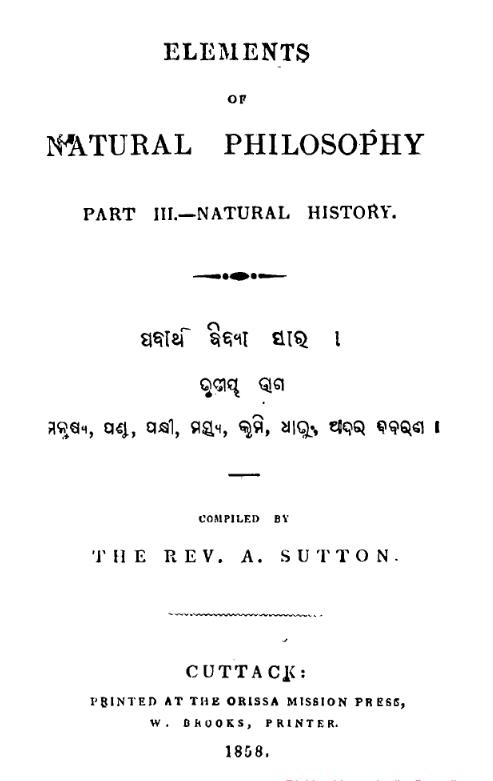Published in 1858, Padartha Bidya Sara by Amos Sutton represents a significant contribution to the field of scientific literature, particularly in the study of natural philosophy and Indian knowledge systems. This textbook is the third volume in a series that seeks to distill complex ideas and concepts into a more accessible format for students and scholars alike. As an illustrative work from the 19th century, it reflects the intellectual milieu of its time, often bridging traditional knowledge with emerging Western scientific thought.
The publication of Padartha Bidya Sara was grounded in the rich tradition of Indian scholarship, which had long grappled with philosophical inquiries regarding the nature of reality, matter, and existence. Amos Sutton, with his erudite background, aimed to synthesize this traditional knowledge with contemporary scientific advancements. In doing so, he sought not only to educate but also to inspire a new generation of thinkers who could appreciate the interplay between different epistemologies.
The 1850s was a period of significant change in India and the rest of the world, characterized by colonial influences and the emergence of modern scientific approaches. Sutton’s work provided an important platform for discussing the principles of natural science while reaffirming the value of indigenous knowledge. This dual focus helped in fostering a holistic understanding of the natural world, making the textbook an essential resource for those interested in both Western science and Indian philosophical traditions.
Padartha Bidya Sara encompasses a wide range of topics related to natural philosophy, chemistry, biology, and the physical sciences of the time. Sutton employed clear, didactic language to define essential concepts, drawing from both classical texts and contemporary scientific knowledge. This approach made the material approachable for students entering the realm of higher education during an era when scientific inquiry was expanding rapidly.
One of the outstanding features of this textbook is its meticulous organization. Sutton carefully divided the content into thematic sections, ensuring that readers could navigate through complex ideas without becoming overwhelmed. The volume includes illustrations and diagrams, enhancing the learning experience by providing visual representations of intricate concepts. This pedagogical design was particularly innovative for its time, demonstrating Sutton’s commitment to effective teaching practices.
Padartha Bidya Sara had a lasting influence on the educational landscape of India, paving the way for future generations of scientists and scholars. The synthesis of traditional knowledge with emerging scientific ideas encouraged a spirit of inquiry that was essential in the context of colonial India. It also fostered a renewed interest in indigenous philosophical traditions, helping to preserve and promote these invaluable sources of knowledge.
In contemporary times, this work is often revisited by scholars interested in the history of science in India, as it exemplifies early efforts to integrate diverse knowledge systems. The textbook serves as a historical artifact, illustrating how science education was approached during a time of great transformation.
Books Info
| Books name | Padartha Bidya Sara Part-3 / ପଦାର୍ଥ ବିଦ୍ୟା ସାର |
| Author | Amos Sutton |
| No Of pages | 76 |
| Publisher | NA |
| Publication | 1858 |
| Printed At | The Orissa Mission Press |
| Distributor | NA |

